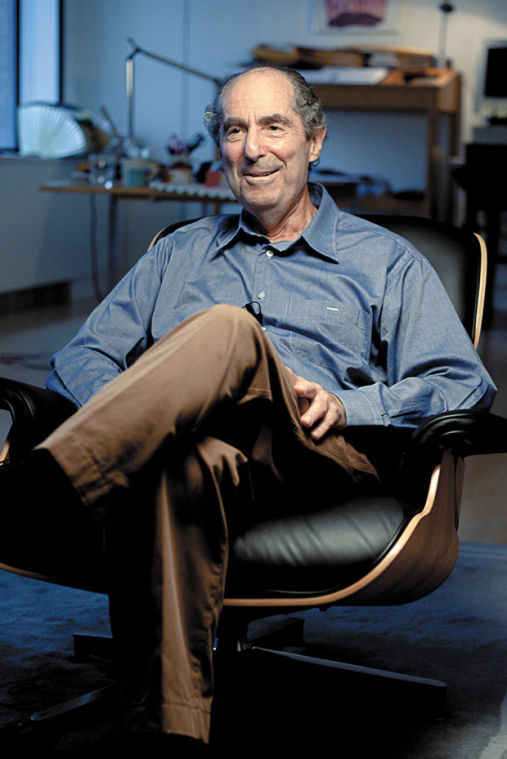Philip Roth: A death in the family to generations of devoted readers
Published May 31, 2018
“At any event, all I can do with my story is tell it. And tell it and tell it.” —Philip Roth in “My Life as a Man”
Acclaimed Jewish writer Philip Roth’s recent passing hit me like a death in the family. Like many American Jewish males of my generation, Roth to me was like an older brother, a long-distance literary mentor and more recently the writer who more than anyone alive deserved the Nobel Prize in Literature.
Roth died of congestive heart failure May 22 in a New York hospital at age 85.
ADVERTISEMENT
I started at the St. Louis Jewish Light in 1969. The first film I reviewed for the paper was “Goodbye Columbus,” based on the 1959 novella that was Roth’s first major published work of fiction. That same year, Roth’s ribald and hilarious “Portnoy’s Complaint” took the literary world and popular culture by storm.
Roth wrote unashamedly about his protagonist Alexander Portnoy, the first of his major fictional alter egos. Portnoy was a prototypical “nice Jewish boy,” who worked for the Human Rights Commission in the office of then New York Mayor John Lindsay. Portnoy also had an insatiable libido that had at its principal outlet, masturbation in a variety of unlikely (or unspeakable) settings. Both the movie version of “Goodbye Columbus” and the novel “Portnoy’s Complaint” established Roth as a kind of Lenny Bruce of the printed page.
Among his admirers he was listed along with Saul Bellow and Bernard Malamud as one of the best Jewish authors alive. But because of his unsparing caricatures and unflattering descriptions of middle-class Jewish boorishness, he was viciously assailed as a “self-hating Jew,” a charge that I always considered to have been unfair and unfounded. Roth took the criticism very seriously and spent much of his early and middle career defending his work against charges of Jewish self-hatred, giving aid and comfort to anti-Semites and for his treatment of his women characters as mere receptacles for his own lustful needs
Roth also expended much energy protesting that while his own biography was duplicated almost in its entirely among his fictional characters, his stories and novels were not “about” him. One could dispute that claim when looking at the bios of characters Alexander Portnoy, David Kepesh, Peter Tarnopol and Nathan Zuckerman, most of them were born in Newark in 1933 and attended Weequahic High School in suburban enclave next door to Newark with a large Jewish population. Some of the characters went to Bucknell University and did stints at the Iowa Writers Workshop and the English Department at the University of Chicago. In novels like “The Counterlife” Roth would taunt his detractors with characters that share not only his biography, but also his very name.
ADVERTISEMENT
In 1975, I learned that David Williams, who was the son of Roth’s late wife, Margaret Martinson Williams, was living in Soulard. Williams confirmed that some of Roth’s characters, especially Lucy Nelson and a main character in “My Life as a Man” were based on his mother, who was killed in an automobile accident in 1968. It was quite a find at the time, and Roth himself referenced my article in his autobiography “The Facts.” He signed my copy of the book, which is a treasured object in my library.
Over time, Roth gained worldwide respect as one of the world’s most gifted authors. He largely outgrew his need to protest too much about being a self-hating Jew. His works of fiction—a prolific 31 books over 51 years—came to be highly regarded among the literary establishment.
Female critics of his early writing came to appreciate the multilayered quality of some of his women characters. The writing community lined up solidly behind Roth to be awarded the Nobel Prize in Literature—the only major prize in letters that eluded him. Since the Nobel Prize is not awarded posthumously, the annual handicapping about whether Roth would finally be named for the ultimate prize will come to an end with his passing.
An affectionate fact-based novel, “Asymmetry,” by Lisa Halliday, one of Roth’s lovers late in his life, and which has the ring of truth about it, shows us a side of Roth that is not commonly known—he was a real mensch. When Halliday was struggling to pay off a crushing student loan, Roth offered to pay it; she thanked him, but refused.
After they ended their relationship, Halliday received a receipt from her university that her loan had been paid in full.
Roth left strict instructions that he did not want any Jewish prayers or ceremonies at his funeral. He was of course intensely Jewish ethnically but was a dyed-in-the-wool atheist. He wanted to be buried next to his parents, but could not find a gravesite near theirs. He was to be buried at a university cemetery near two Jewish friends, so he could have “someone to talk to.”
Despite his disavowal of religious belief, Roth was a true Jewish genius — and a mensch.
May his memory be a blessing even though he outlived his chance to receive his well-deserved Nobel Prize.
















